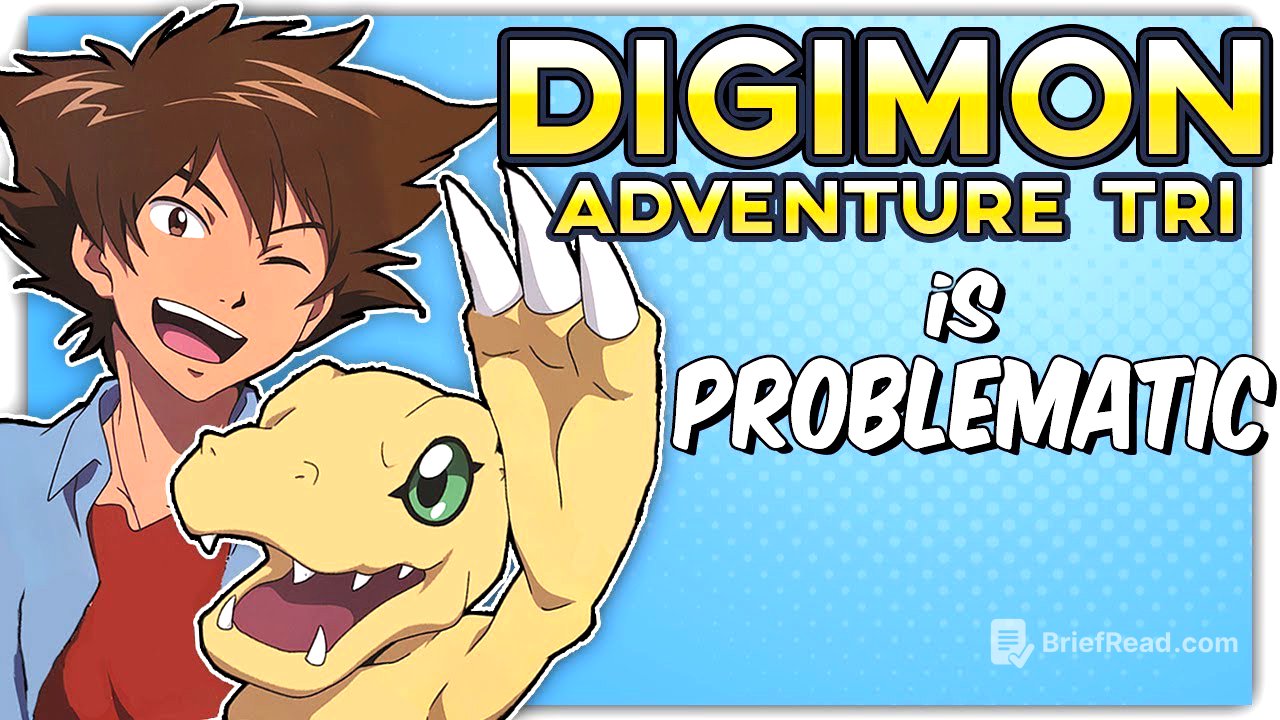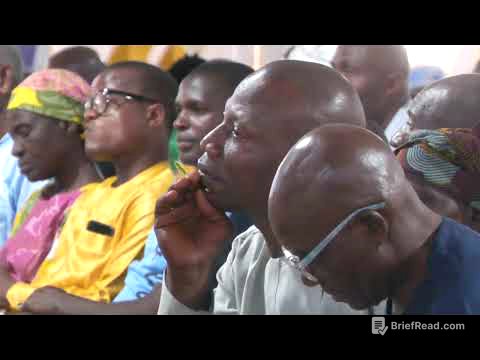TLDR;
This video reviews Digimon Adventure tri, a series of six movies that continue the story of the original Digimon Adventure. While the reviewer appreciates the core concepts and expansion of Digimon lore, they find the series disappointing due to character inconsistencies, a convoluted plot, and poor execution. The review covers the plot, character analysis (particularly of the new character Mako), animation, and overall impact of the series.
- Digimon Adventure tri had potential but suffers from poor execution.
- Characters feel inconsistent with their original portrayals.
- The plot is convoluted and lacks urgency.
- Animation and sound mixing are flawed.
- Despite its flaws, the reviewer still loves Digimon and is excited for future projects.
Introduction and Initial Excitement [0:00]
The reviewer expresses their long-standing love for Digimon, particularly Digimon Adventure, noting its uniqueness despite being often dismissed as a Pokémon clone. The announcement of Digimon Adventure tri in 2014 initially sparked great excitement, but this enthusiasm waned as the project evolved from a 26-episode series to a series of six movies released over three years. The reviewer admits to not keeping up with the series during its release, only revisiting it after the final movie came out.
Plot Overview and Character Focus [1:27]
Digimon Adventure tri is set six years after the original series and three years after 02, with the original digidestined nearing high school graduation. A new threat emerges as Digimon infected with a virus appear in the real world through portals. A new digidestined named Mako and her Digimon, Meikumon, are introduced, adding to the mysteries surrounding government agents and the missing 02 cast. The series explores how the digidestined's relationships with their Digimon change as they approach adulthood, but the reviewer finds that only Gomamon has been significantly developed as an individual character.
Plot and Urgency Issues [3:48]
The reviewer criticizes the lack of urgency and motivating force for the characters. Side plots, such as Izzy's interest in fashion due to Mimi, feel out of place given the looming threat. The disappearance of the 02 kids, which could have been a strong motivator, is largely ignored. The plot progresses through random Digimon appearances rather than character-driven actions. Despite these issues, the reviewer appreciates the foundation of the story, including the Digimon virus and the expansion of Digimon lore, such as the introduction of Yggdrasil and exploration of the Quantum Sea.
Lore and Exposition [4:30]
The reviewer appreciates the expansion of Digimon lore in Tri, including the exploration of concepts like Yggdrasil, the Quantum Sea, and Homeostasis. They were particularly excited by the revelation of the identities of the two government agents as original digidestined. However, they note that the series sometimes struggles with clumsy exposition, a common issue in high fantasy series where answering lore questions can compromise the plot. The two main entities driving the plot, Homeostasis and King Drasil, lack physical form and act through agents, making it difficult to identify a primary villain.
Analysis of Mako and the "Mary Sue" Critique [6:40]
The reviewer addresses the criticism that Mako is a "Mary Sue," arguing that this label is often misused and unproductive. They examine the common criteria for a Mary Sue, such as being flawless, having unexplained talents, or being a self-inserted character. The reviewer finds that Mako does not fit these criteria, as she is self-conscious and her artistic talent is minor. They argue that calling Mako a Mary Sue is a scapegoat for the series' broader problems. While acknowledging that Mako isn't a great character, they see her as a symptom of Tri's issues rather than the root cause.
Mako's Role in the Story and Character Arcs [8:47]
Mako's arc is contrasted with Himekawa's, highlighting the extreme examples of relationships with Digimon. Mako's arc is meant to show the difficult decision of sacrificing her partner for the greater good. However, the reviewer notes that Mako comes to this conclusion too early, and it is ultimately Tai who decides Meikumon must die. The reviewer suggests that Mako's struggle and ultimate decision should have been more central to the plot. Despite these issues, the reviewer acknowledges the emotional impact of Meikumon's death scene and recognizes Mako's necessity for the story.
Art Style, Voice Acting, and Character Inconsistencies [11:48]
The reviewer initially liked the new art style but finds that it, combined with voice acting and personality changes, makes it difficult to recognize the characters. They criticize the stoicism of the characters during stressful moments, feeling that the heart of the characters is missing. The reviewer points out a specific example where the characters show no emotional reaction to fighting a villain who has taken the appearance of Ken Ichijouji, one of the missing 02 kids. This odd behavior and performance are seen as a foundational problem with Digimon Adventure tri, making the characters feel unlike their original portrayals.
Animation and Action Sequences [14:17]
The reviewer criticizes the use of 3D animation for Digivolution sequences, finding it visually unappealing and drawn out. They contrast this with the original series, where Digivolution sequences were edited and sped up to maintain pacing. While they appreciate the 2D animation for the ultimate and mega evolutions, they find that the action scenes are undermined by poor editing, sound mixing, and the characters' stoic reactions. The reviewer cites the battle with Alphamon as an example, where the music and sound effects fail to match the intensity of the scene.
Overall Disappointment and Final Thoughts [16:38]
The reviewer expresses overall disappointment with Digimon Adventure tri, citing conflicting ideas and tones. They wish the series had been longer to allow for more in-depth exploration of ideas and character development. The reviewer speculates that the decision to make the series into six movies was driven by revenue considerations and the possibility of a sequel. Despite its flaws, the reviewer still loves Digimon and is excited for future projects. The series ends with a rendition of "Butterfly," which evokes strong feelings of nostalgia and reminds the reviewer why they love the series.









